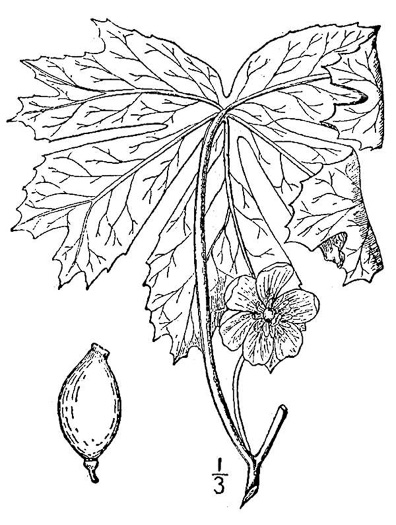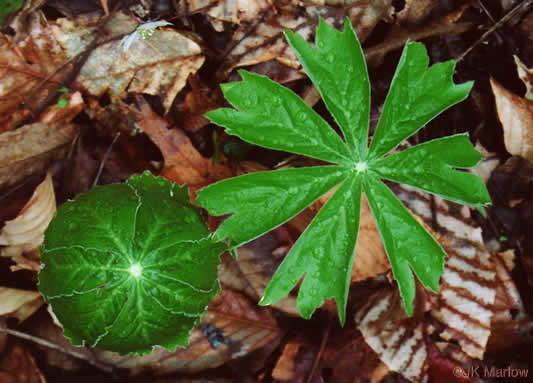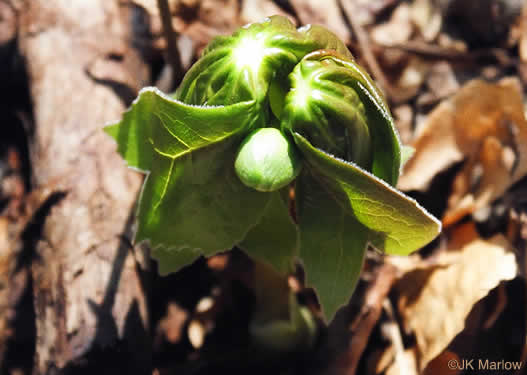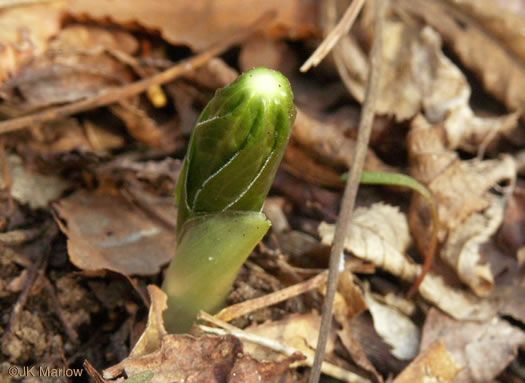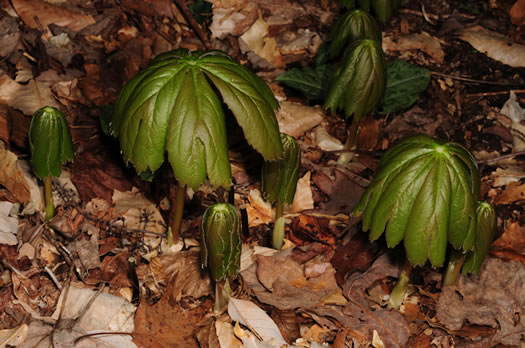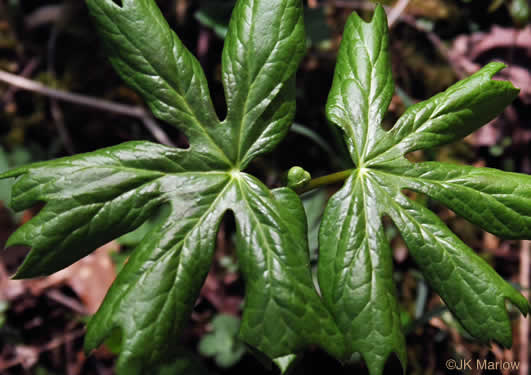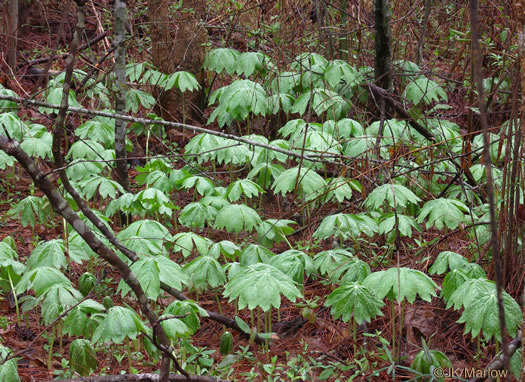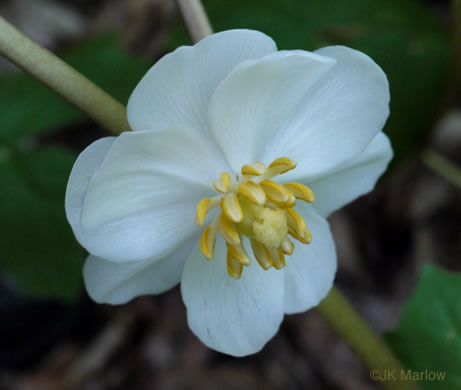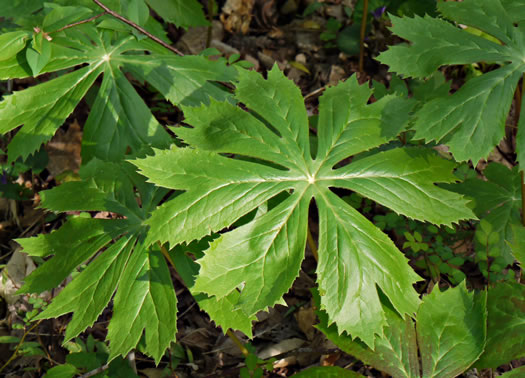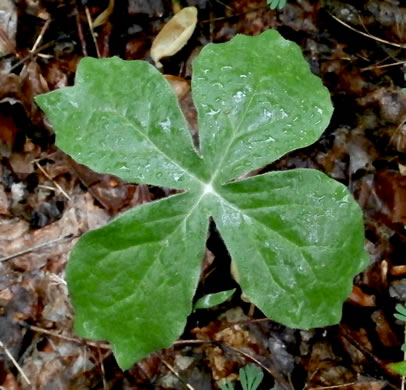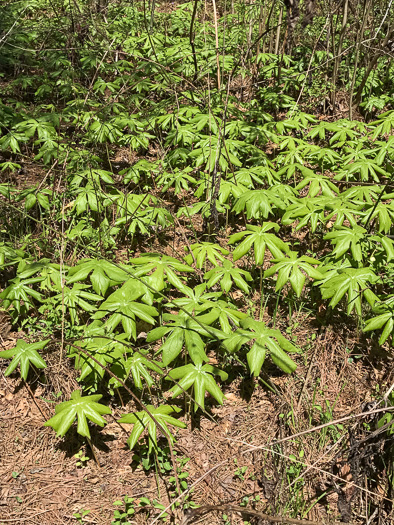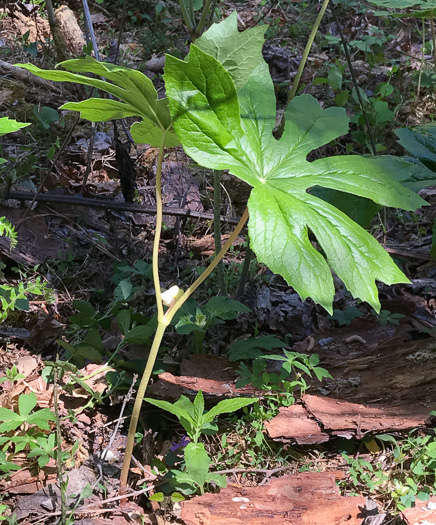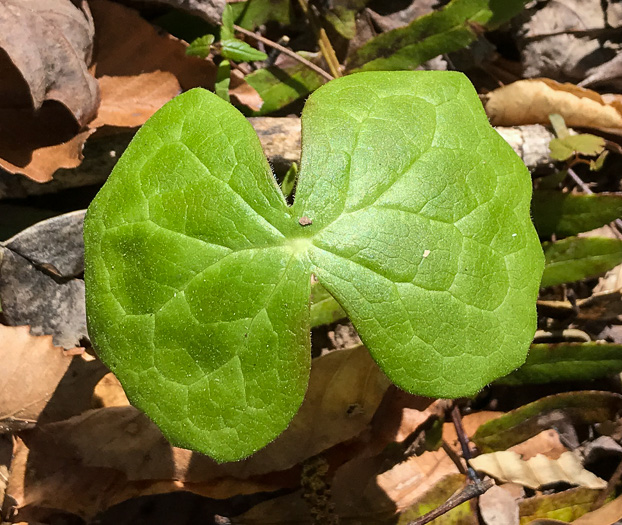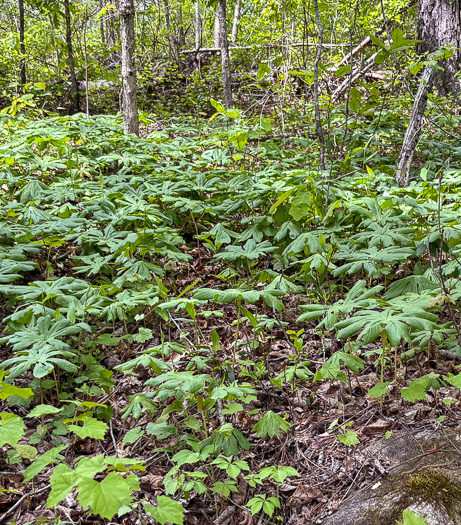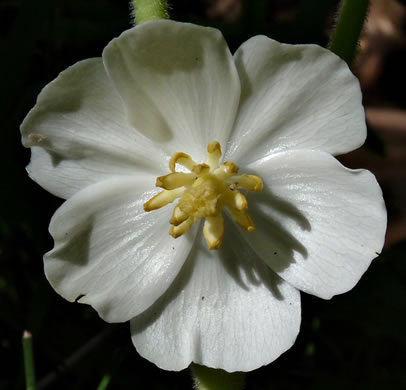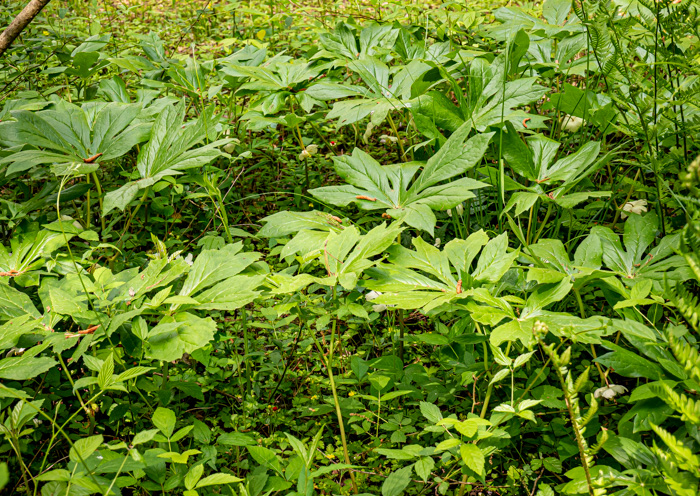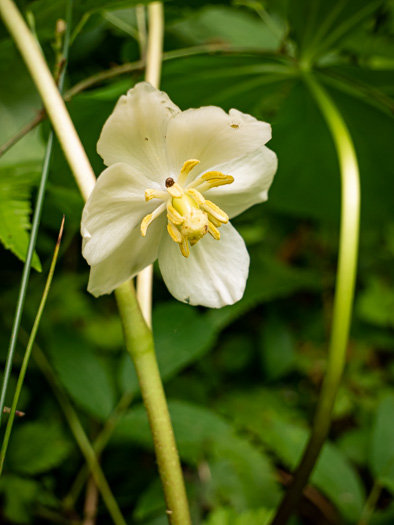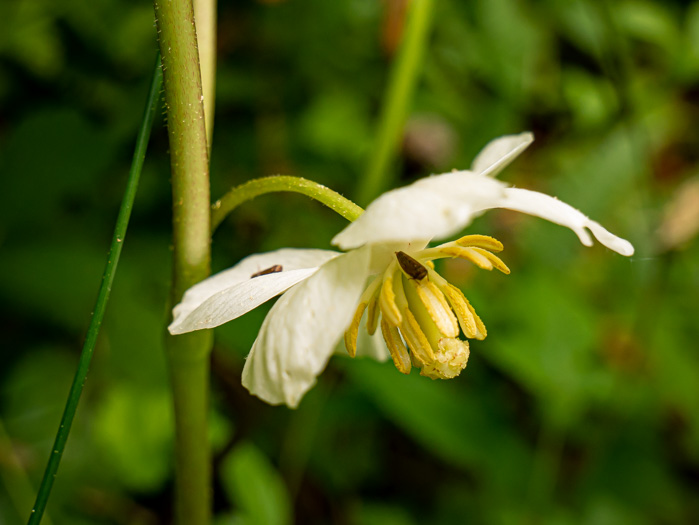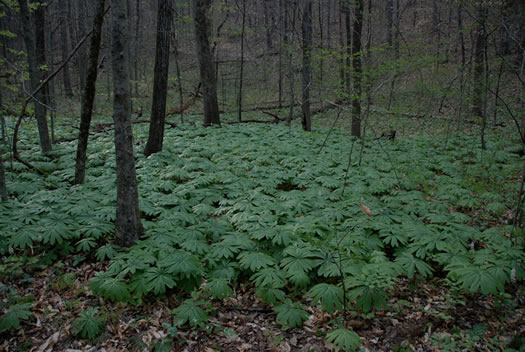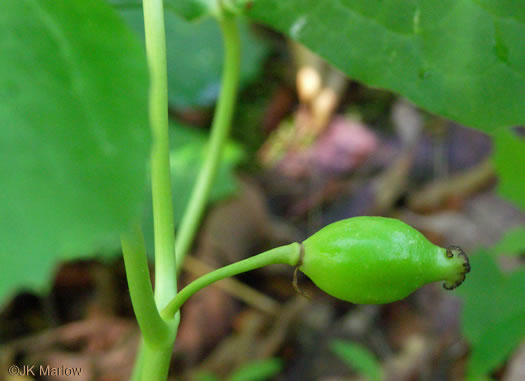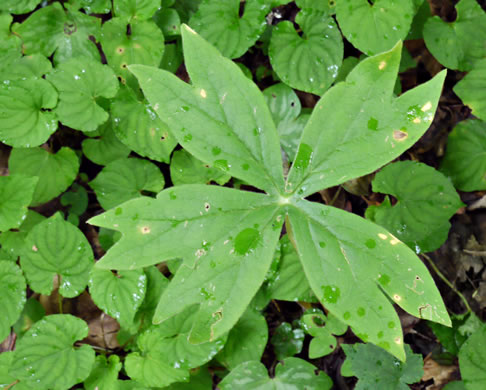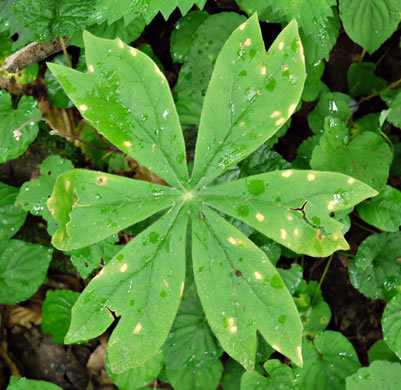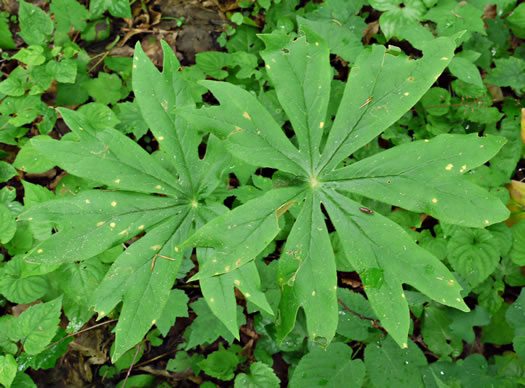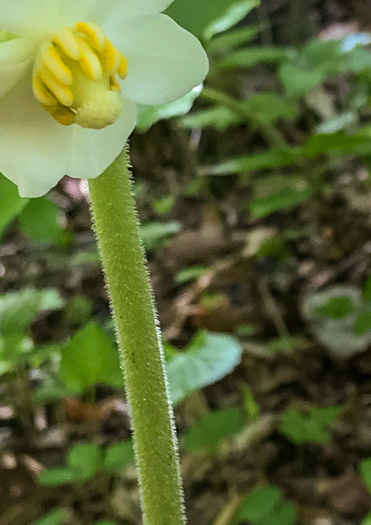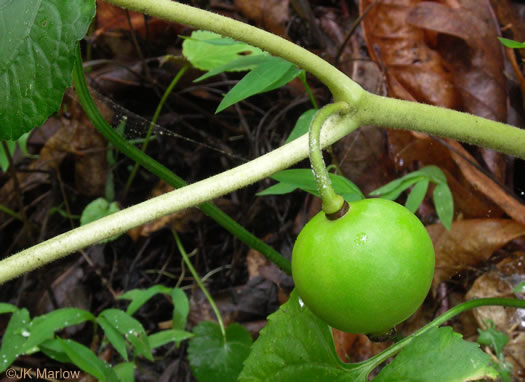Spermatophytes (seed plants): Angiosperms (flowering plants): Eudicots: Ranunculales
WEAKLEY'S FLORA OF THE SOUTHEASTERN US (4/24/22):
Podophyllum peltatum
FAMILY
Berberidaceae
Go to FSUS key
Dig deeper at SERNEC, a consortium of southeastern herbaria.
Learn more about May-apple from the Vascular Plants of North Carolina.
SYNONYMOUS WITH
PLANTS NATIONAL DATABASE:
Podophyllum peltatum
FAMILY
Berberidaceae
SYNONYMOUS WITH Floristic Synthesis of North America. BONAP (Kartesz, 2021)
Podophyllum peltatum
SYNONYMOUS WITH Flora of North America
Podophyllum peltatum
SYNONYMOUS WITH VASCULAR FLORA OF THE CAROLINAS (Radford, Ahles, & Bell, 1968) 077-07-001:
Podophyllum peltatum FAMILY Berberidaceae
SYNONYMOUS WITH Manual of the Southeastern Flora (Small, 1933, 1938)
Podophyllum peltatum
COMMON NAME:
May-apple, American Mandrake
To see larger pictures, click or hover over the thumbnails.
JK Marlow jkm0303k_10
March Oconee County SC
Oconee Station/Station Cove
Leaves peltate and deeply lobed, per Wildflowers of the Eastern United States (Duncan & Duncan, 1999).
JK Marlow jkm0503d_13
March Oconee County SC
Oconee Station/Station Cove
Flower bud already visible between the two unfolding leaves.
JK Marlow jkm200411_3678
April Greenville County SC
Tall Pines Wildlife Management Area
Only the two-leaved plants bear flowers, per Guide to the Wildflowers of SC, 1st ed. (Porcher & Rayner, 2001).
Richard and Teresa Ware rtw_p_peltatum_3
April
Corolla white, firm; petals 6-9, stamens usually 12-18; stigma sessile, per Vascular Flora of the Carolinas (Radford, Ahles, & Bell, 1968).
Stephanie C. Brundage scb_041721atlanta35
April DeKalb County GA
Native Plant Botanical Garden, Perimeter College, Georgia State University
Stephanie C. Brundage scb_041721atlanta36
April DeKalb County GA
Native Plant Botanical Garden, Perimeter College, Georgia State University
Stephanie C. Brundage scb_041721atlanta38
April DeKalb County GA
Native Plant Botanical Garden, Perimeter College, Georgia State University
Tim Spira tpspodophyllum_clones
April
They form large colonies through rhizomatous growth, per Wild Flowers of NC, 2nd edition (Justice, Bell, & Lindsey, 2005).
JK Marlow jkm080726_001
July Haywood County NC
Corneille Bryan Native Garden
Yellow, fleshy, many-seeded, berry about the size of a small lemon, per Wildflowers of Tennessee, the Ohio Valley, and the Southern Appalachians (Horn, Cathcart, Hemmerly, & Duhl, 2005).
WEAKLEY'S FLORA OF THE SOUTHEASTERN US (4/24/22):
Podophyllum peltatum
FAMILY
Berberidaceae
SYNONYMOUS WITH
PLANTS NATIONAL DATABASE:
Podophyllum peltatum
FAMILY
Berberidaceae
SYNONYMOUS WITH
Floristic Synthesis of North America. BONAP (Kartesz, 2021)
Podophyllum peltatum
SYNONYMOUS WITH
Flora of North America
Podophyllum peltatum
SYNONYMOUS WITH
VASCULAR FLORA OF THE CAROLINAS (Radford, Ahles, & Bell, 1968) 077-07-001:
Podophyllum peltatum
FAMILY
Berberidaceae
SYNONYMOUS WITH
Manual of the Southeastern Flora (Small, 1933, 1938)
Podophyllum peltatum
If a search such as "Carex leptalea var. leptalea" doesn't deliver the results you want, try "Carex leptalea".
Or, to minimize chances of a misspelling, try just "Carex le".
Less is more: If "pencil flower" doesn't deliver the results you want, try "pencil".

